M.V. Georgic 1935 to 1959
Please Note: Firefox and some other Search Engines may not be suitable
Use Google Chrome for this Web Page to load perfectly!
Please Note: All ssMaritime and other related maritime
sites are 100% non-commercial and privately owned, thus ssmaritime is NOT
associated with any shipping company or any other organisation! Although the
author has worked and been involved in the passenger shipping industry for well
over 60 years, but due to his old age and poor health, he was forced to retire.
Yet, he has completed well over 1,365 Classic Liners, Passenger-Cargo Liners as
well as humble converted C3 converted Migrant Liners, which has transported
countless thousands folk to the new world, as well on vacations’. I trust
the features online will continue to provide Classic Liner and Ship enthusiasts
both the information they are seeking, but more so provide a great deal of
pleasure and relive many happy memories!
Please Note: Postcards, photographs & other images are either from the author’s private collection, unless stated otherwise.
A special thank to
the ssmaritime supporters including
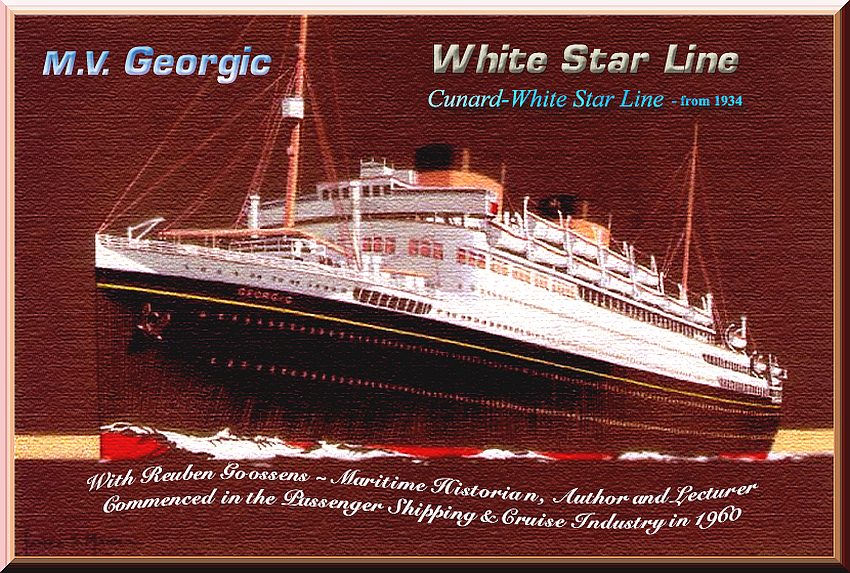
The above logo is based on an early White Star Line postcard
Introduction:
The M.V. Georgic was built for the “Oceanic Steam Navigation Co. Ltd” being the “White Star Line”. She was the very last passenger liner to be built for the “White Star Line” before they merged with “Cunard Line” in 1934.
Originally, late in the 1920s, “White Star Line” had planned to build two new liners to replace their ageing fleet, both of these ships were to be motor-ships rather than more traditional steam-ships: the first was to be a large ship that was going to be around 1,000 ft long superliner with three funnels, which was going to be known as the “Royal Mail Motor Vessel” or the R.M.M.V. Oceanic.
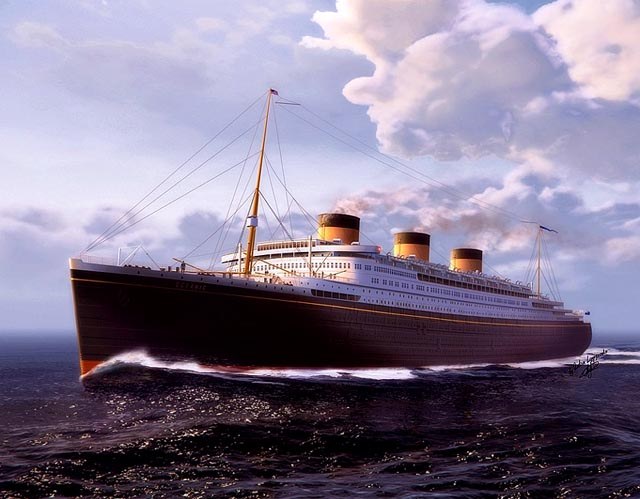
The “Oceanic” … The ship that never was!
There was also going to be a smaller more economic liner of a similar design but with two funnels and this would be the M.V. Britannic which was completed in 1930.
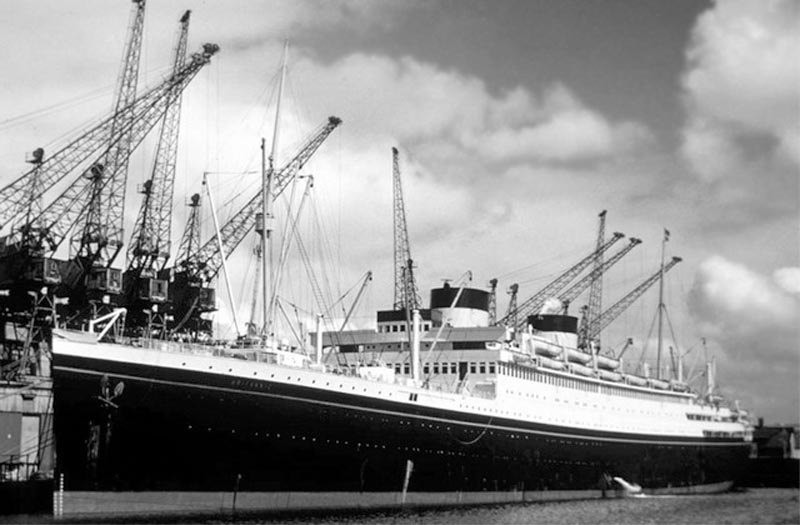
However, White Star decided to not go ahead with the “Oceanic” as yet, thus work commenced on the “Britannic” in 1927 and she was launched in 1929. Work was started on the “Oceanic” in 1928, and although the keel was laid down, but due to financial problems all work on the “Oceanic” was halted in July 1929 and the entire “Oceanic” project was soon cancelled and she became know as “The Ship that never was!”
In her place White Star decided to build a more economical sister-ship to the M.V. Britannic, and she would be the second “White Star” ship to bear that name, after an earlier liner the S.S. Georgic that had served the company from 1895 to 1916.
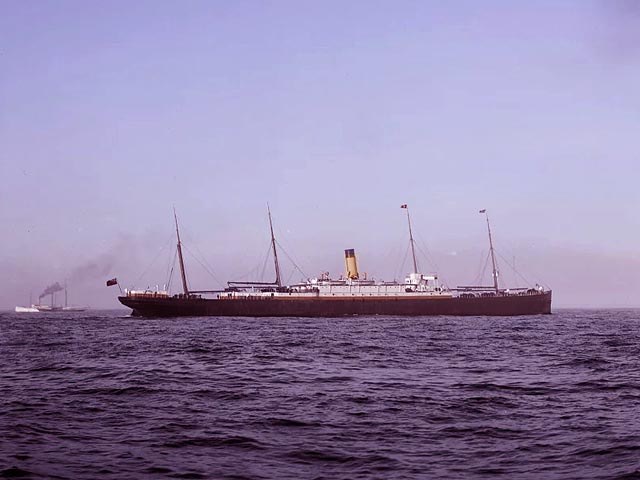
S.S. Georgic (I) of 1895
Thank you
Building the “Georgic:

She was ordered to be built by
famous “Harland and
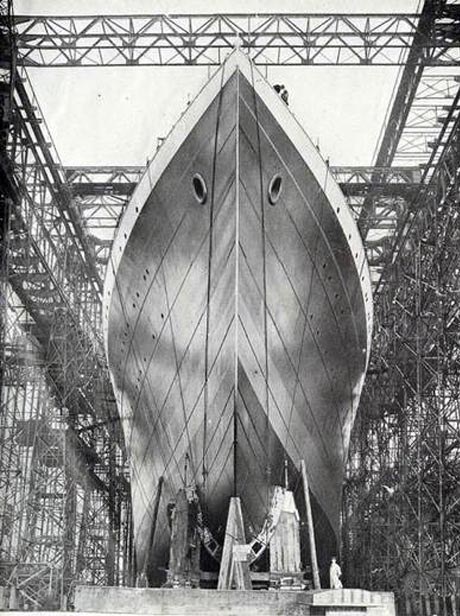 -
-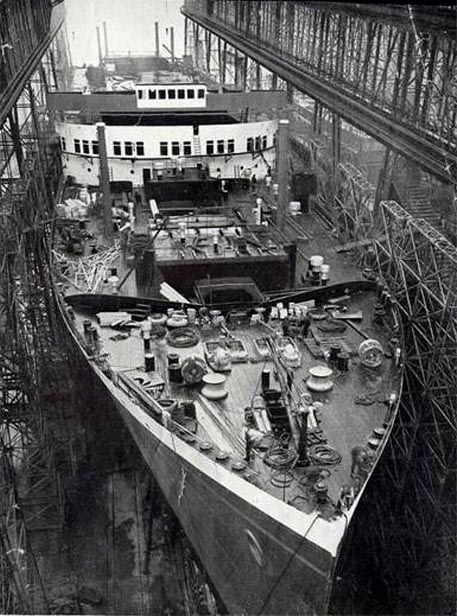
On November 12, 1931, she was officially named and launched and, once the “Georgic” entered the water she was taken under tow to her “Harland & Wolff” fit-out berth, and completion would take another seven months.
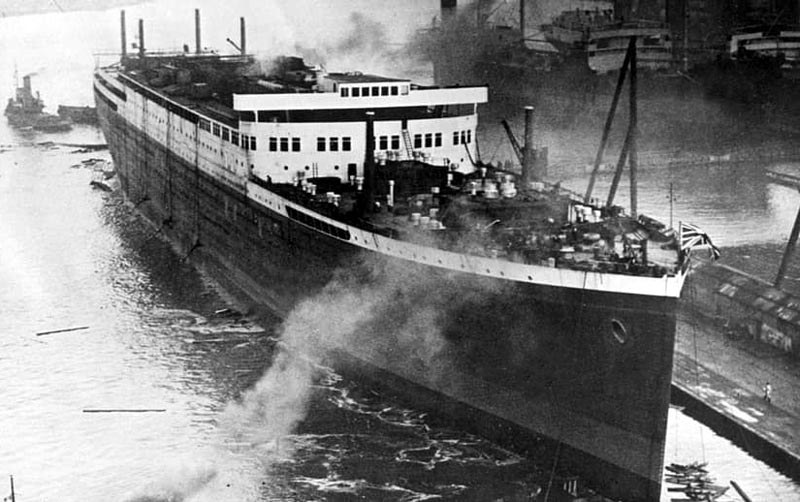
The Georgic (2) is seen having just been launched and taken under tow to her fit-out berth
The “Georgic” was designed as was stated at the time on rather “ambitious lines” as she had an almost straight stem, a cruiser stern, and atop the ship there were those two, what was claimed to be “fashionable squat funnels”. Although she did differ to her earlier sister the Britannic, for the “Georgic” had a rounded forward superstructure. In addition “Georgic was just slightly larger than the “Britannic” as the Georgic was 27,759 GRT (Gross Registered Tons) compared to her sister which was 26,943 GRT. The M.V. Georgic accommodated a total of 1,542 passengers, with 479 in a super glamorous Cabin Class, 557 in a superb Tourist Class and 506 in a good standard Third Class.
Having been completed she undertook her deep sea trials on June 4, 1932, and her trials were deemed to be successful managing a maximum speed 19.8 knots.
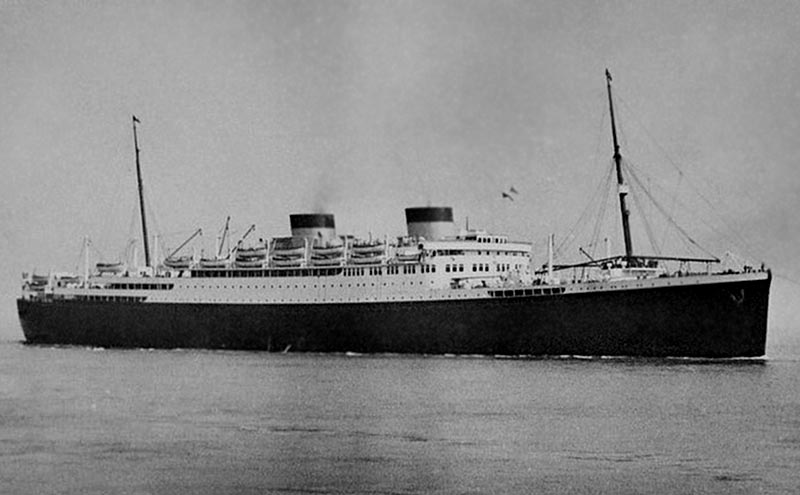
M.V. Georgic is seen during her sea trials on June 4
For the occasion of her sea trials, a large party of guests were invited to join the Georgic’s during her sea trial and the “Belfast Steamship Company” ferry the “Ulster Monarch” was chartered to transport all guests to the ship-yard and board her there.
At the completion of her trials, she was
deemed to be ready for service and she was readied for delivery to her
owners’ the “White Star Line” in
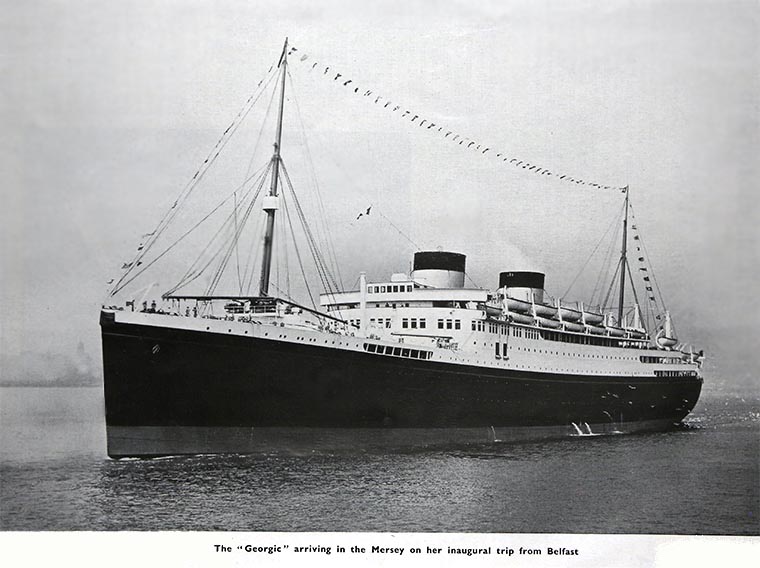
The M.V.
Georgic is about to enter the Mersey and head for
She was officially delivered to her owners at
Liverpool on June 10, 1932, and the arrival of the largest ever British
motor-ship “Georgic” attracted huge attention with large crowds
awaiting her along the River Mersey as well as in the port city of Liverpool.
She was welcomed to the famed port city for the very first time by
The “Georgic” was a slightly larger version of her sister the “Britannic”, having a tonnage of 27,759 GRT, compared to Britannic’s 26,943. In addition the “Georgic” differed somewhat in appearance from the M.V. Britannic as Georgic’s forward superstructure and bridge was rounded instead of flat. Both ships featured two short stumpy funnels, however the forward funnel was a dummy and it housed the radio room as well as an engineers Smoking Room.
Both ships had identical power plants,
consisting of two 10 cylinder, four stroke double acting “Burmeister
& Wain” diesel engines. At the time they were the largest and most
powerful engines of their type to be constructed by “Harland and
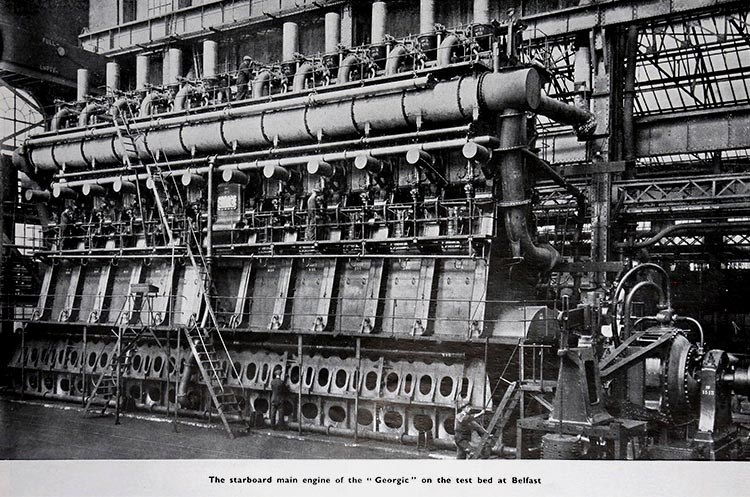
Thank you
Georgic’s interiors were superbly designed, as she was decorated in the then popular “Art Deco” style, which was very different to that of the “Britannic” as she was decorated in various period styles, which was also popular in the 1920’s.
M.V. Georgic’s accommodated 479 in Cabin Class, 557 in Tourist Class and 506 in Third Class. In addition to passenger accommodation, Georgic also offered refrigerated cargo capacity in two of her holds. Her hull was divided into eight holds and she had twelve main bulkheads.
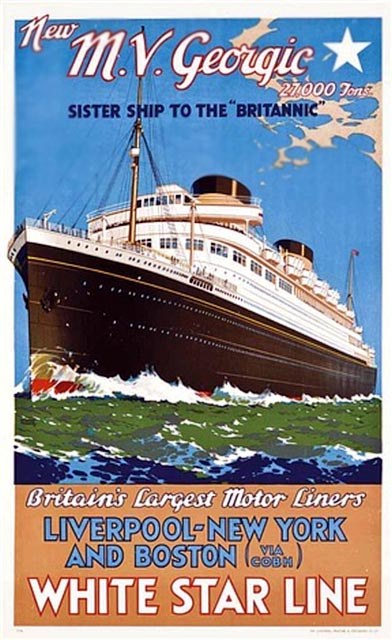
An advanced promotional Poster for the M.V. Georgic
Interior Photo Album:
The photographs’ presented are mostly from the ships Cabin Class, and one from the Tourist Class and it reveals the great care that was taken with her overall interior design and décor.
The first venues shown below are all on
Promenade Deck and I have placed them from forward to aft commencing with the
spacious the
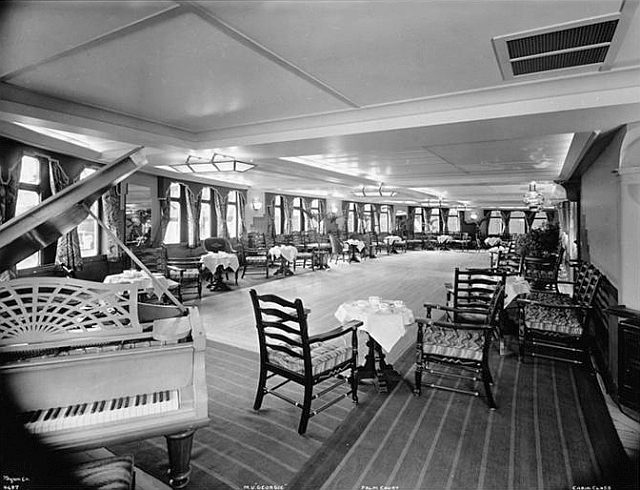
The
delightful
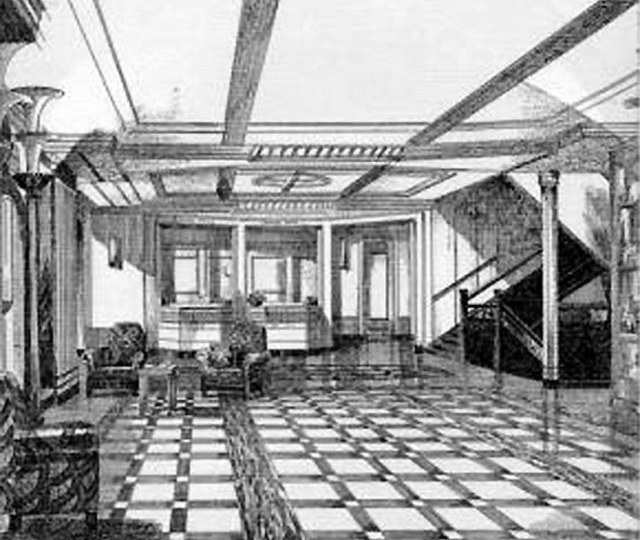
Aft of the
Above we
see a drawing of this Lobby
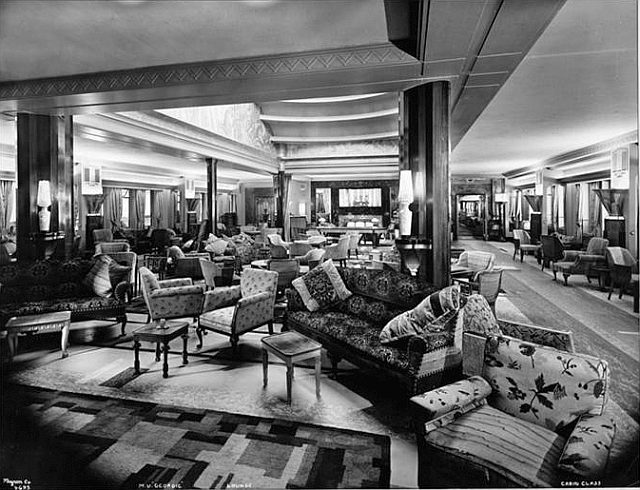
Aft of the
forward Lobby was the magnificent Lounge with a centred Dome
The Lounge
also had a stage as well and a dance floor
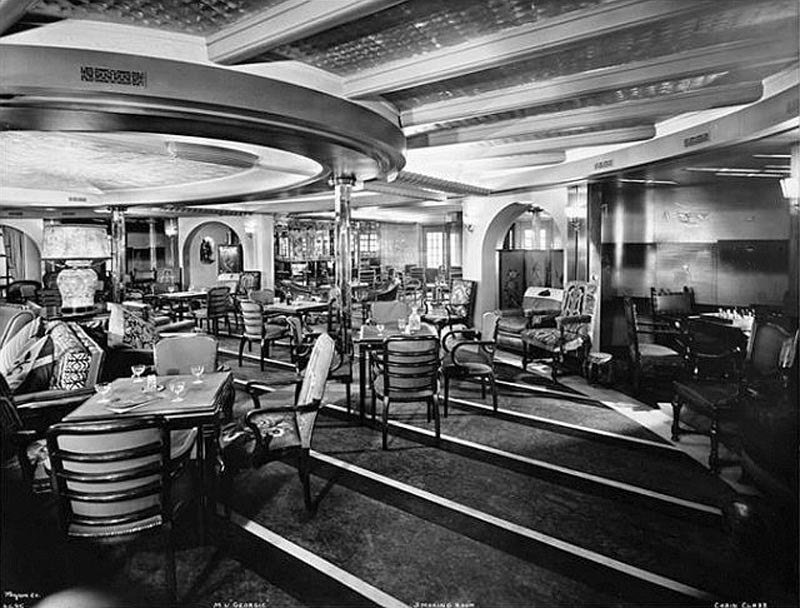
The
beautiful Smoking Room looking into the Veranda
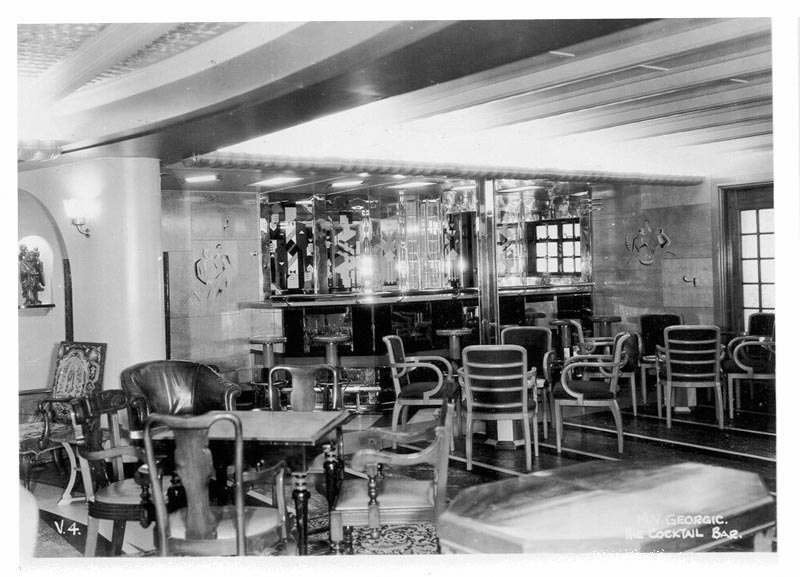
A Postcard of the Veranda Cocktail bar
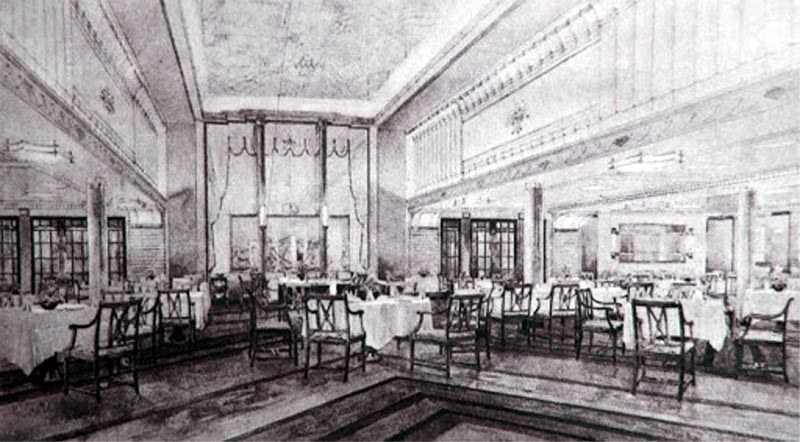
Above & below: The Restaurant amidships on C Deck,
Above: A
drawing of the domed Dinning Room - Below: And a photograph of the venue
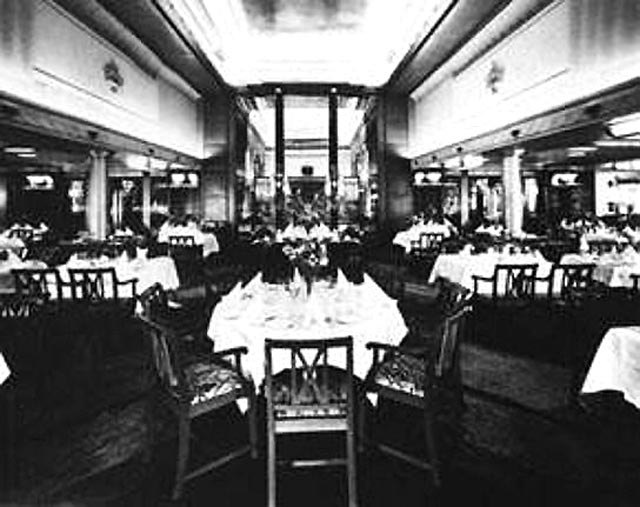
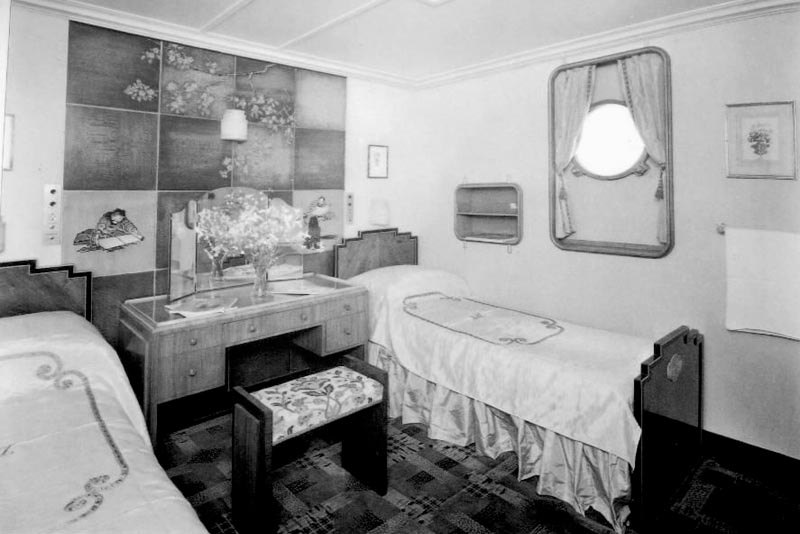
A twin bedded outside cabin on C Deck
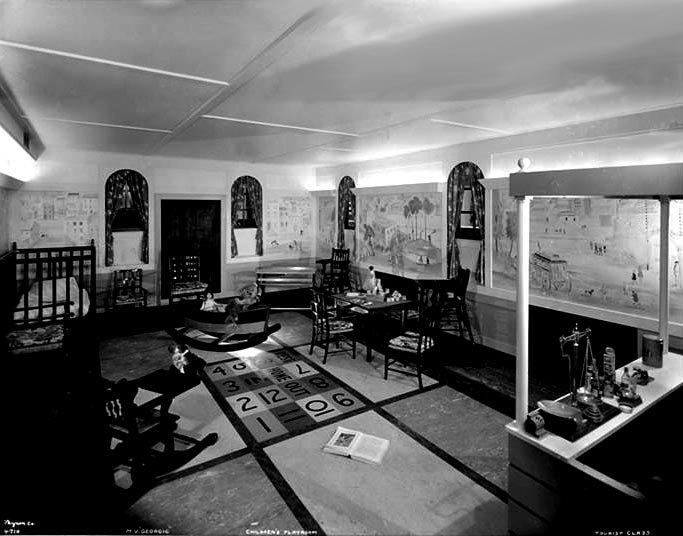
This the Tourist Class Children’s Playroom located Deck A just aft of Cabin Class cabins
Maiden Voyage:
M.V. Georgic departed Liverpool for her
maiden voyage on June 25, 1932, sailing via Cobh and

M.S.
Georgic departs Liverpool on her maiden voyage to
After her maiden voyage to New York, the “georgic continued her Trans-Atlantic services, however during the winter months she operated One Class luxury cruises from New York to the West Indies and South America, which became extreamly popular and became an annual event.
Then early in 1933, M.V. Georgic temporarily
replaced the aging R.M.S. Olympic on the
Having returned to Liverpool from the
Although the M.V. Britannic and Georgic were not the largest nor fastest liners of their day, yet they proved to be extreamly popular ships, and in fact during the 1930’s they became “White Star Lines” most profitable two ships. This was due to their lower running costs and more affordable ticket prices compared to their other ships being all more costly steamships operating on the service. Therefore it was these two ships that really kept the company afloat financially during a time that was well known as being … “the Great Depression”.
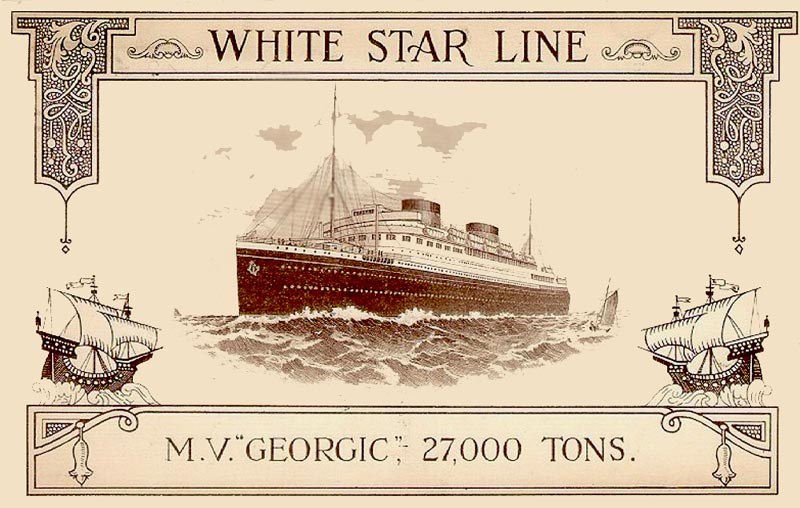
This is the cover of a “Georgic” Letter Card provided to all Cabin Class cabins
Then on May 10, 1934, the “White Star Line” merged with their long time competitor “Cunard Line” and both the “Britannic” and “Georgic” became part of the newly formed “Cunard-White Star Line”, although both ships retained their “White Star” livery as well as the house flag, but the “Cunard” house flag was added.
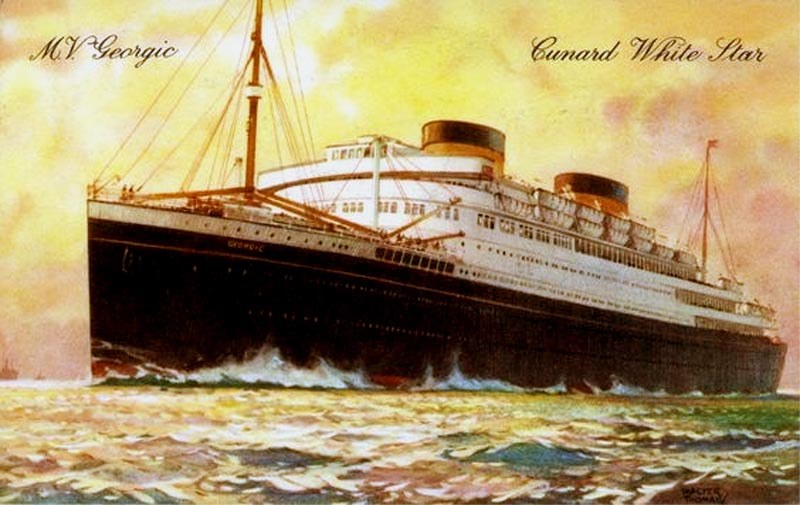
A beautiful M.V. Georgic postcard when she was with the “Cunard-White Star Line”
In 1935 both ships were transferred to
operate from London’s “King
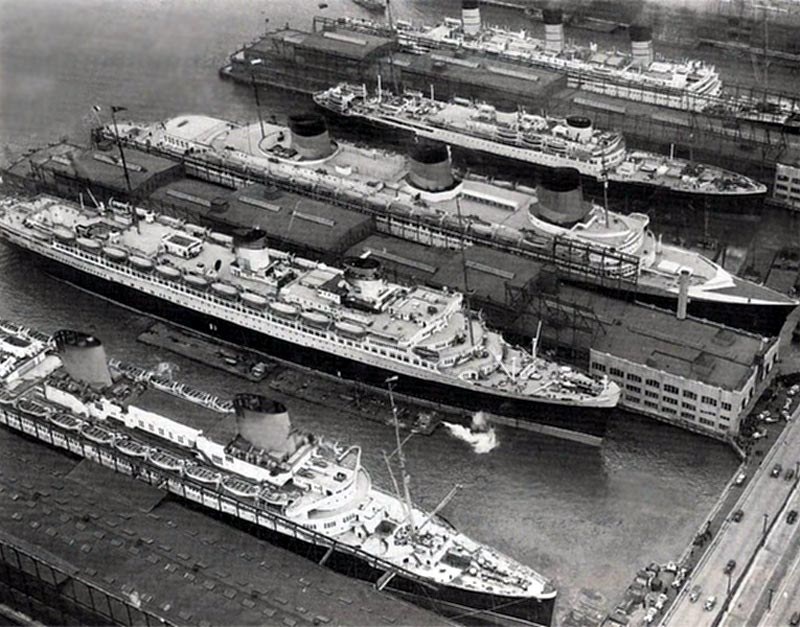
Ships row
in

A Cabin Class Farewell Dinner Menu dated August 19, 1938
Thank you
During the winter months of course, she
continued to operate her popular cruises from
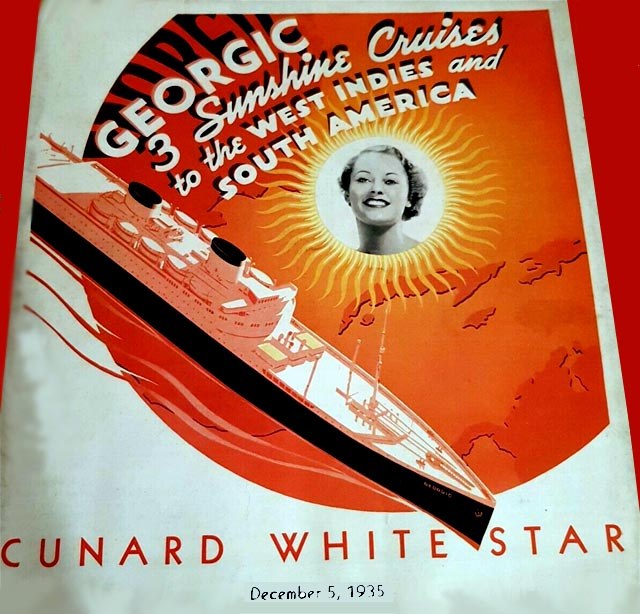
An M.V. Georgic cruise brochure for 1935
At the outbreak of war, Georgic was
not immediately commandeered, but instead she was transferred back to the
Liverpool to
Her Wartime Career:
Having been a most an exceedingly successful
Trans-Atlantic liner during the 1930s, the M.V. Georgic was
requisitioned to become a British troopship in 1940. However she was
severely damaged and sunk in June 1941 when she was hit by a German bombing
raid whilst she was docked in
But first let us read the full and interesting
story of her World War 2 days.
His
Majesties Troopship - H.M.T. Georgic:
Whilst the M.V. Georgic was on the Atlantic
bound for her home port, on March 11, 1940, “Cunard-White Star
Line” was advised by the British Admiralty that she would be taken off commercial
service and would be requisitioned after having disembarked her passengers and
discharged her cargo at
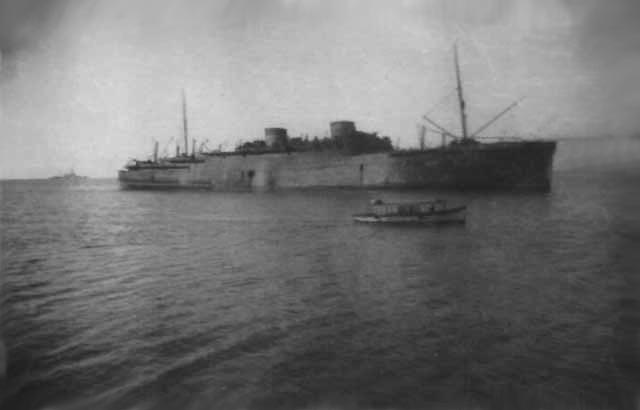
H.M.T.
Georgic is seen at sea May 1940
In May that year she assisted in the
evacuation of British troops from the failed Norwegian Campaign, from the ports
of Andesfjord and Narvik, landing them at the
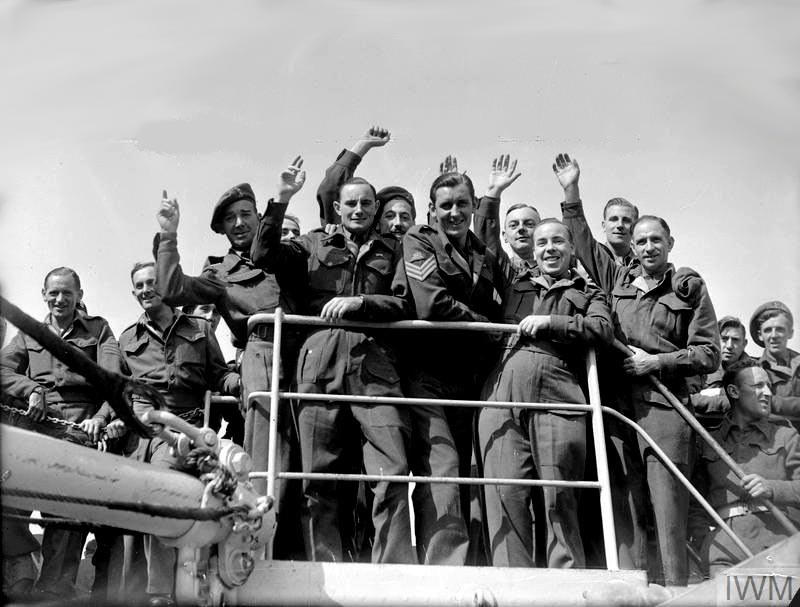
British Troops seen on board the Georgic
With grateful thanks to the “Imperial War Museums” (IWM) - www.iwm.org.uk
Then in
The Lancastria received three direct hits from
a German Junkers 88 bomber and within 20 minutes, the 16,243 GRT ex luxury
liner sank taking with her an estimated 4,000 victims. The sinking is the worst
single disaster in British maritime history, and it is claimed that it was even
more victims than the sinking of the Titanic and
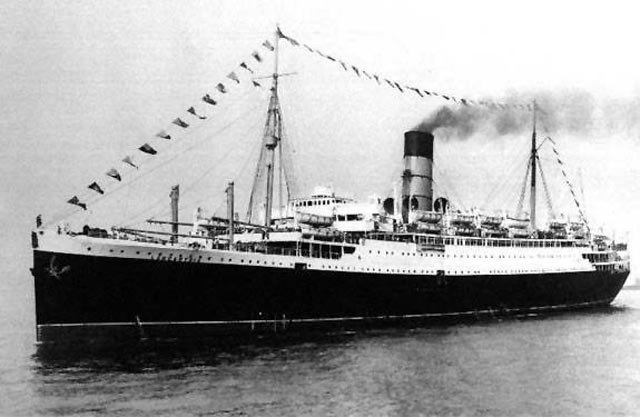
The tragic Lancastria seen during her civilian days
Between July and September 1940, H.M.T.
Georgic sailed to
On May 22, 1941, H.M.T.
Georgic departed
A week later on July 14, 1941, being at anchor just off Port Tewfik whilst awaiting to embark some 800 Italian detainees, suddenly German bomber aircraft that were based in Crete, were sweeping the area for targets, and they spotted the unprotected “Georgic” which was an easy target and proceeded to attack her. At first there were several misses, but then she was hit by two bombs, the first bomb glanced off her side and exploded in the water, causing huge damage to the ship’s hull right next to No.4 hold causing heavy flooding. Then the second bomb hit the aft section of boat deck and it penetrated some five decks down, and it exploded in a lift shaft, causing massive damage to No.5 hold, and it was there were a fire started that soon ignited fuel from ruptured fuel tanks; the fire spread rapidly and next it ignited ammunition that was stored in the aft holds causing an explosion, which engulfed the entire aft of the ship in a massive fire.
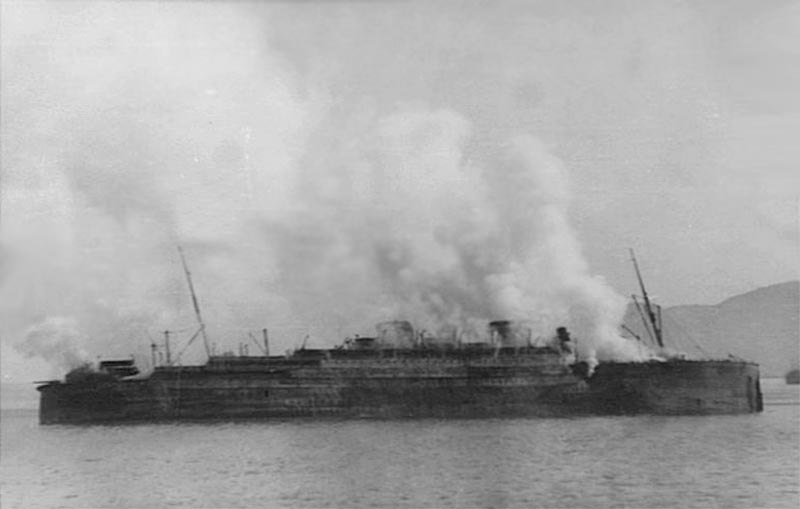
H.M.T.
Georgic is seen ablaze in the
Despite the huge damage to her, the
ship’s engineers amazingly managed to start her engines and
On the after deck located near No.5 hatch was
a new German tank that was being taken to
The Georgic slowly settled by the stern onto a shallow reef and was left to burn out over the next two days, and by that time she was half submerged, the engine room had partially flooded, and the superstructure was gutted by the fire. As the flames swept forward through the decks, the accommodations and finally the fire reached the bridge. Thus an order was given to abandon ship, and all on board managed to escape using the ships lifeboats.

Flames having reached her forward sections
It took several weeks for the ship to cool down enough for an inspection team to board her. She was a burnt out and blackened hulk, and there was eighteen feet of water in the engine room.
An assessment team had boarded her and on
September 14, 1941, came the advice that the damage to Georgic was
assessed by them and she was considered to salvageable, and that she could be
saved. On October 27, she was refloated and her holes and openings were
temporarily plugged with the last of the water being pumped out, she was now a
wreck, but a dry ship.
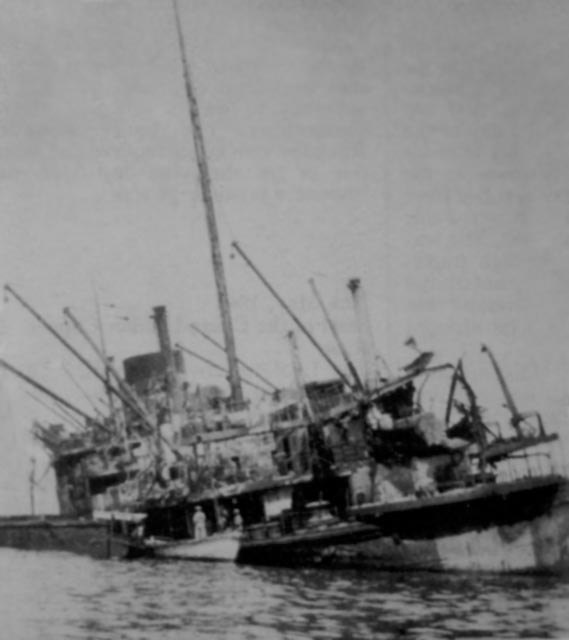
The ship is being inspected in September
Then on December 2, 1941, the Georgic was
taken in tow stern first, by the “Clan Campbell” and the
“City of
The Georgic left
For twelve hours S.S. Recorder and the
“Georgic” rode out the gale and then, as the winds abated,
cautiously swung back through 180 degrees to resume their course. Meanwhile
they were joined by another tug, the
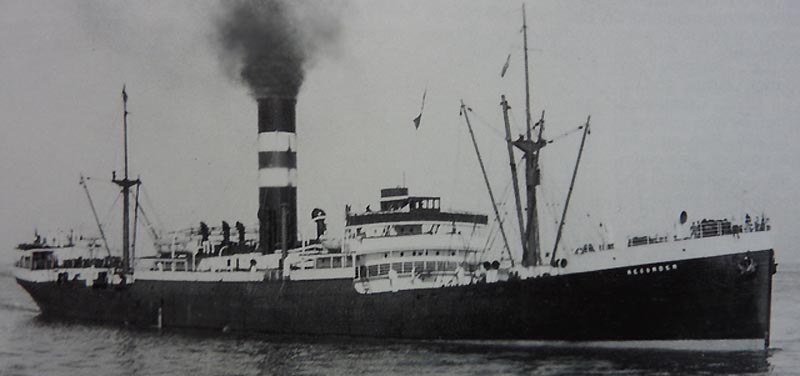
S.S. Recorder
The salvage crew responsible for the “Georgic” lived on board the “Recorder” and every few days boarded the liner from a motor launch in order to pump out a steady ingress of water.
On March 31, 1942 the ships arrived at
The “Georgic” was dry-docked for
to have her hull completely cleaned and the ship given further repairs. She
remained in
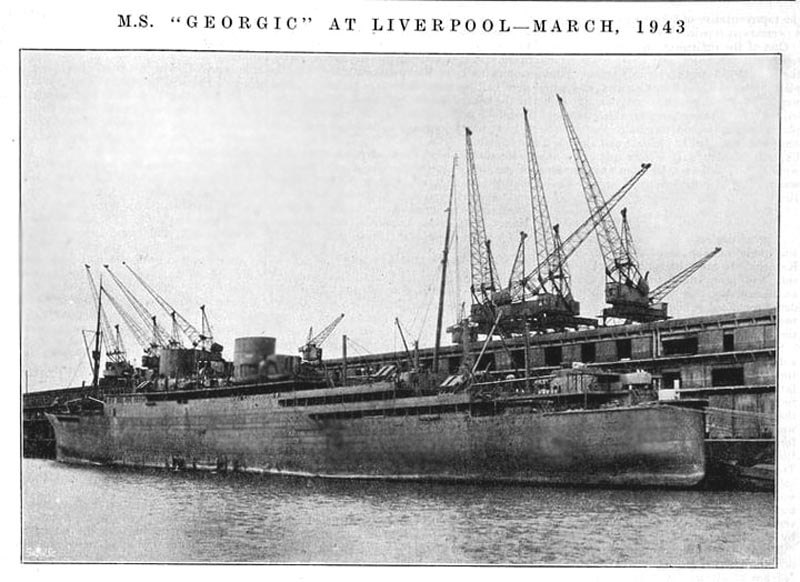
The
patched up Georgic is seen at
Soon thereafter she headed for Harland and
At the very shipyard that had originally built
her “Harland and
The main changes were, her forward funnel and main (aft) mast had been removed and her forward mast been shortened. Now every possible difficulty in separating Georgic from her sister the Britannic had been completely reduced as they now looked like completely different ships.
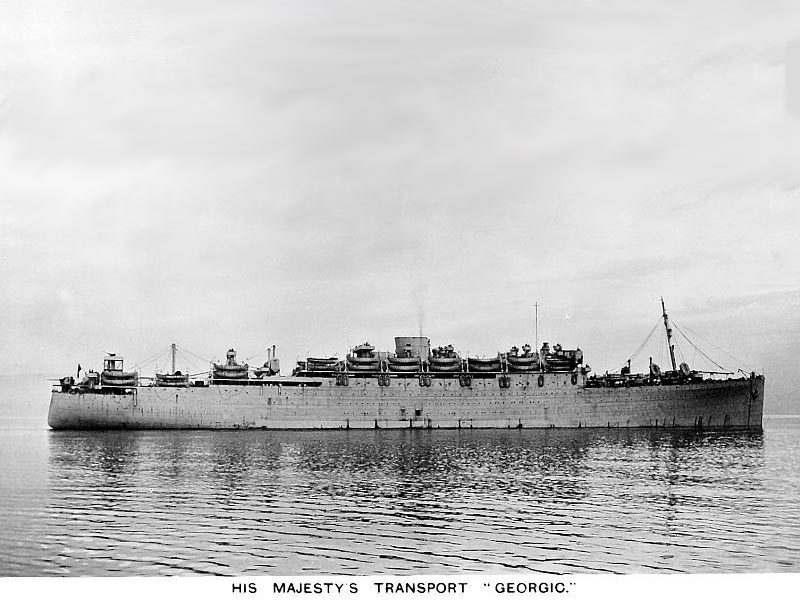
The new look Troop Ship Georgic seen in December 1944
On December 16, 1944, she was returned to her
owners in
During 1945 the H.M.T. Georgic trooped to
Then early in 1946 she Georgic repatriated
5,000 Italian prisoners of war. In June 1946 on a homeward voyage from
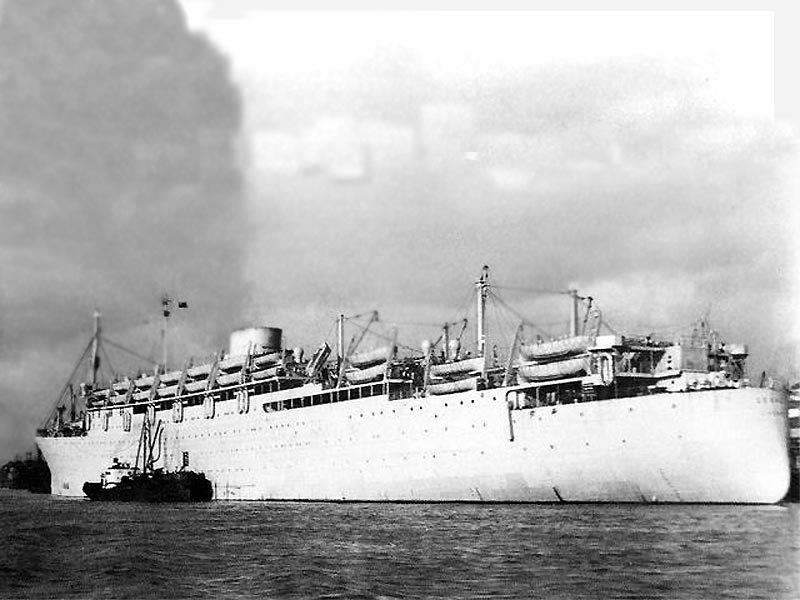
H.M.T.
Georgic is seen disembarking troops at
Thank you
During the last year of the war, the
“Georgic” made trooping voyages to
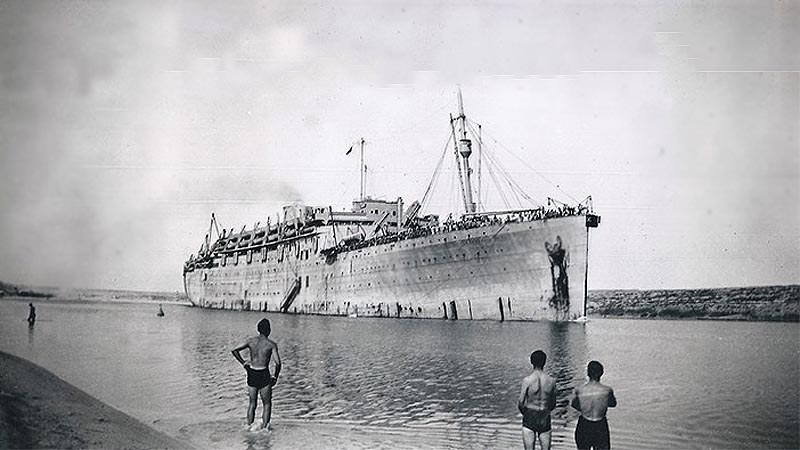
H.M.T.
Georgic is seen in her final year as a troop transport ship
Post
War Service:
By 1948, with trooping requirements falling
off, and the need for additional ships were required for the emigrants
trade, especially to
In September 1948 Georgic was sent
to the “Palmers & Company” shipyard at Hebburn on the
M.V. Georgic had her White Star colours restored in the refit, with her black hull, red boot topping, a thin yellow ribbon high around her hull, with a white superstructure and a yellow and black funnel. However her interiors were not restored to their pre-war luxury standards, but to say the least they were of an extreamly humble standard.
Externally she looked like a long and a relatively sleek liner, with single funnel, main (aft) mast removed and her shortened foremast. Located just aft of the Bridge were two straight masts, one taller than the other, used to hoist flags and some equipment. Whilst up on Boat deck, Promenade and A decks aft as well as far forward on A deck, she carried an astonishing 36 lifeboats.
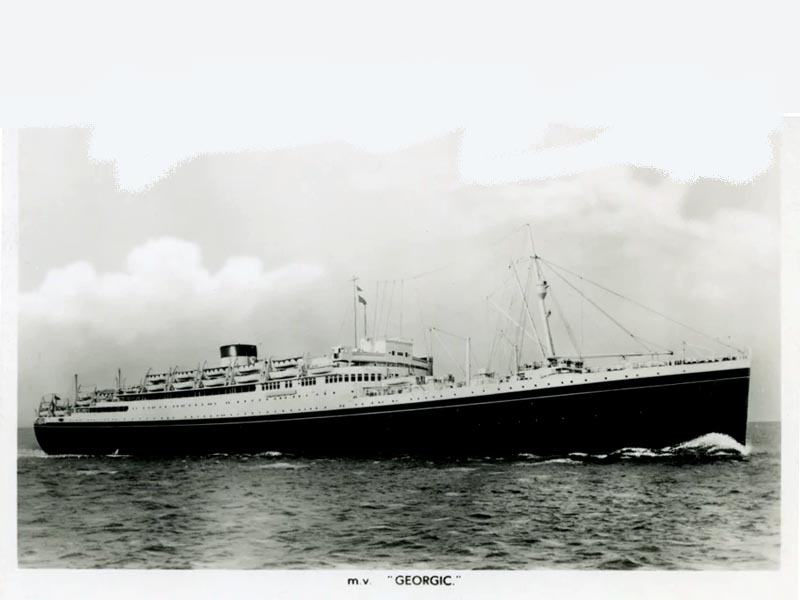
M.V. Georgic seen in her new guise in January 1949
From January 11, 1949 to November 19, 1955, M.V. Georgic was operated on the UK-Australia migrant service, managed by Cunard, but under charter by the Australian government.
She departed Liverpool on Tuesday January 11,
1949, for her first voyage to
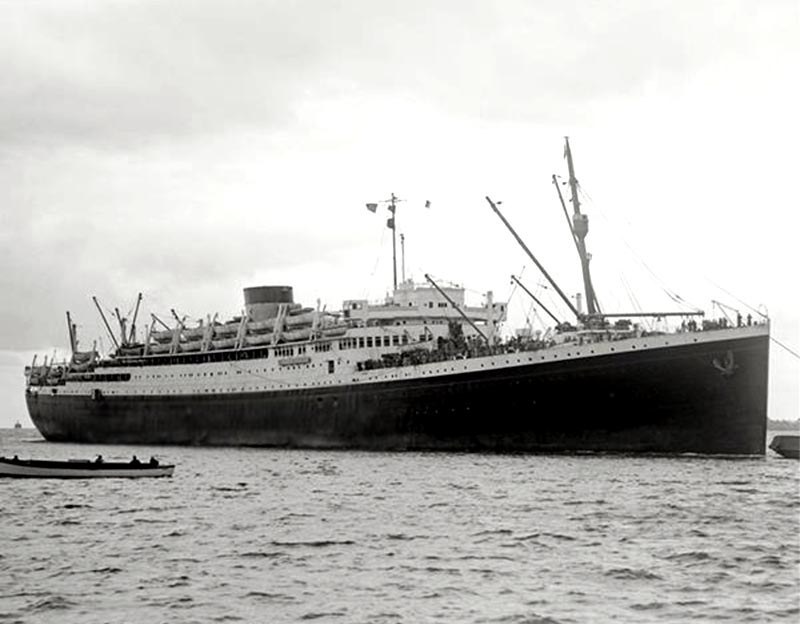
The
Georgic is seen at
She then sailed headed for
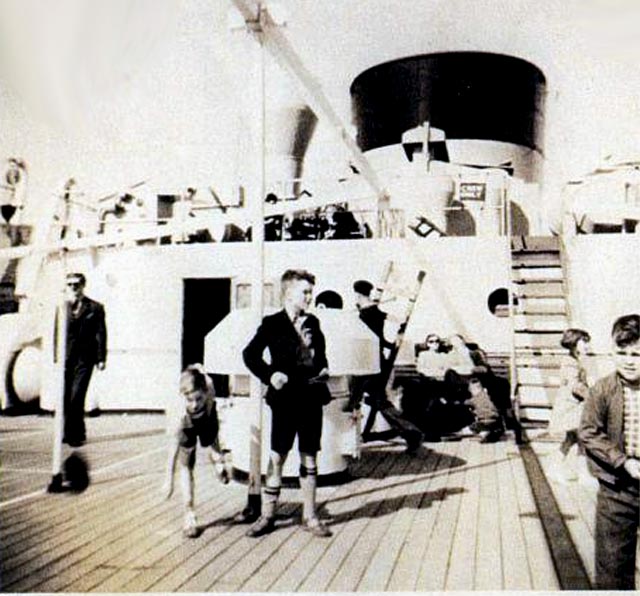
Children playing on her aft deck
Thank you
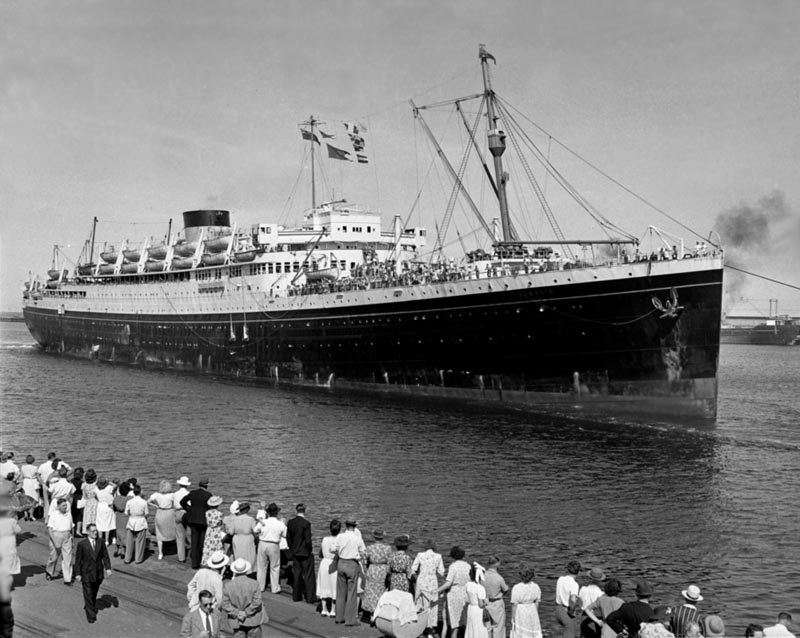
M.V.
Georgic is seen arriving at
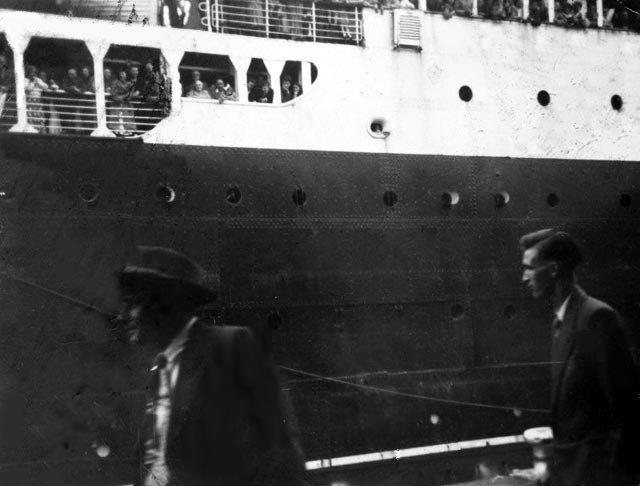
Having
just berthed many passengers are along the railings, waiting to disembark and
commence a new life in
She departed
During the summer high seasons from 1950
through to 1954, the Cunard Line chartered M.V. Georgic from
“MoT” to operate a “Tourist Third” class service from
Liverpool and then from Southampton to
Her second voyage to and from
Having returned from her Hong Kong voyage, she
was made ready for her third voyage to
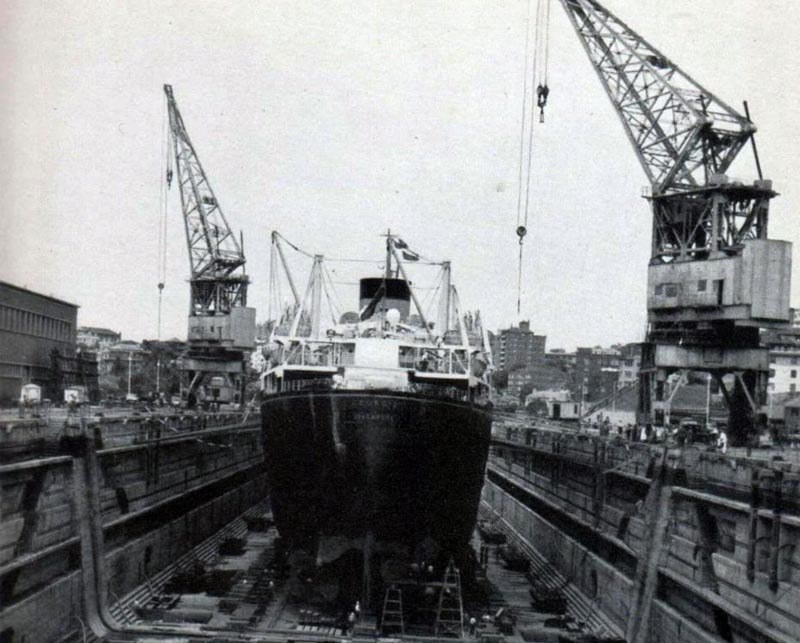
Georgic is seen in the “Captain Cook Dry-dock”
Her next (fourth) voyage departed late in
January 1950, and called at her usual ports of call, visiting
After her next round (fifth) voyage to
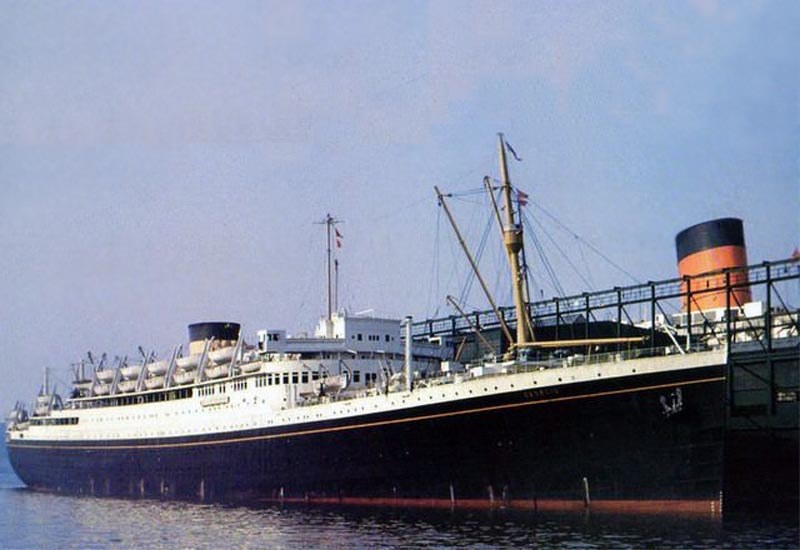
M.V.
Georgic seen whilst under charter to the “Cunard Line” operating in
the summer to and from
M.V. Georgic returned to her Australian duties
departing from Liverpool early in December 1950, but when she arrived in
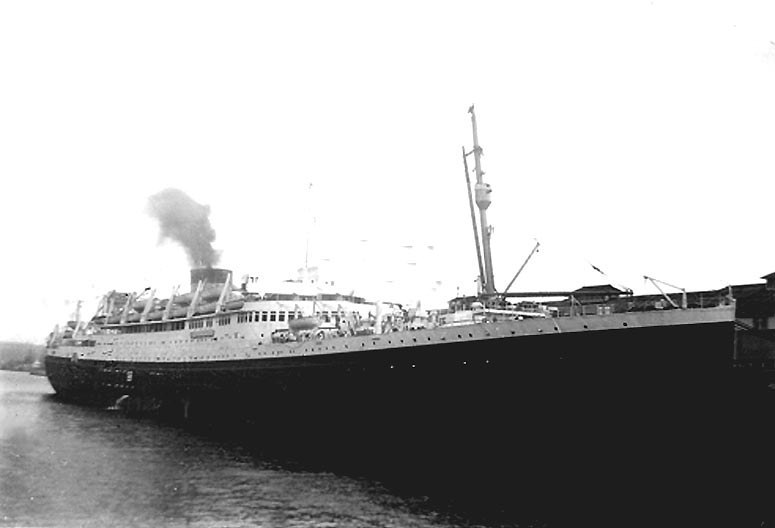
The “Georgic” is seen berthed at the old Woolloomooloo wharf which today has become super luxurious apartments
She was finally released on January 14, and
she departed the very next day the 15th, and she sailed via
Instead of returning to Australia, the “Georgic was used for further trooping duties until she returned to her charter with “Cunard”, but from now it would be seven round voyages to New York and back.
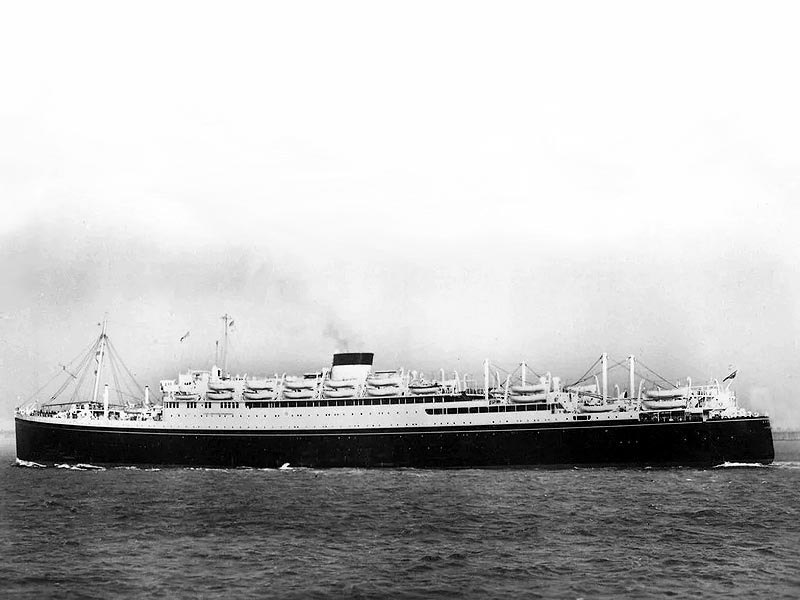
M.V.
Georgic is seen during her Cunard service to and from
From November 1953 to April 1955, the
Georgic was again used for trooping duties as she was commissioned to
carry Commonwealth troops returning from the Korean War, although she
continued to fulfil her Cunard charter agreement from
But in February 1954 she headed to Hong Kong
again, from there she returned via
Her trooping voyages continued for in January
1955 the “Georgic” headed for
Her next sailing was to
Although MoT had announced that the “Georgic” would be withdrawn from service and put up for sale. Yet once again the Australian Government decided to charter her for the season.
M.V. Georgic departed Liverpool for
Sadly by now the Georgic’s aging engines started to prove to be troublesome and they required ongoing work. Yet very quickly she was withdrawn from sale when she was chartered by the Australian Government for one more season on the migrant run.
On the previous voyage to Australia with
migrants from Liverpool sailing on May 21, 1955, sadly when the ship entered
the Red Sea, she became so hot inside considering she was built for the North
Atlantic trade, and sadly there was no air-conditioning, and ventilation was
very poor, especially down below in all those over crowded cabins. It was so
bad that five young children whose parents were taking them to a better life in
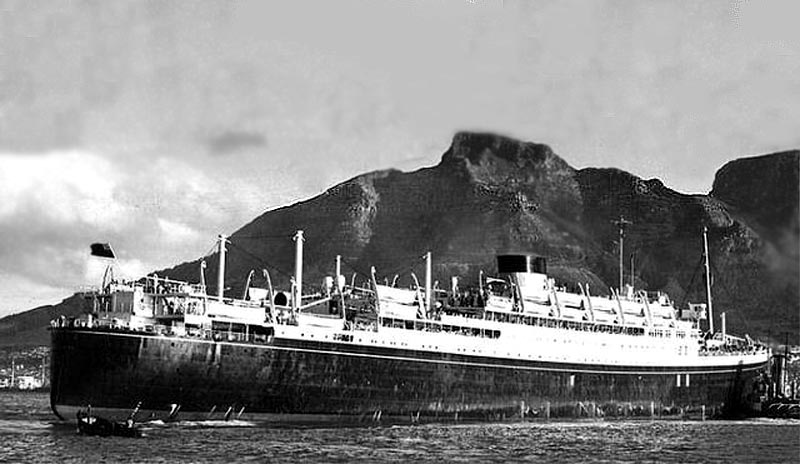
The M.V.
Georgic is seen at
She again passed through Fremantle on
September 29, and then headed to
After a couple of weeks the
“Georgic” departed for the Clyde, and her crew now left the ship on
December 12, 1955 to await the ship breakers. Later in December she was laid up
at
In December, the once luxurious M.V.
Georgic was finally laid up at
Whilst her still luxurious sister
Specifications
& Details M.V. Georgic:
Built
by: Harland &
Wolff at
Yard No: 896.
Official No: 162365
Call Sign: LHRF.
Owners: White Star Line -
1932-1934.
. Ministry of War Transport - 1944-1946.
. Ministry
of Transport - 1946-1956.
Launched: November 12, 1931.
Completed: June 10, 1932.
Maiden Voyage: June 25 1932.
Tonnage: 27,759 GRT - 16,839 Nett.
Length: 683.6 ft - 208.36 m.
Breadth: 82.4 ft - 25.11 m.
Draught: 35 ft - 10.66 m.
Propulsion: 2 10 cyl, four
stroke, double acting “Burmeister & Wain” diesel
engines built by H&W, 20,000 HP.
Speed: 18 knots service speed, 19.8 knots maximum.
Accommodations: Total 1,542 passengers - 1932 to 1940.
Cabin Class: 479 passengers.
Tourist Class; 557 “ .
Third Class: 506 “ .
Troopship: 3,000 men - April 1940.
One Class: 1,962 migrants - 1949 to 1955.
Crew: 500 - 1932 to 1940.
Fate: Sold to be broken up and arrived at the Faslane, Scottish breakers in January 1956, and arrived on February 1.
**************
Remembering the M.V. Georgic
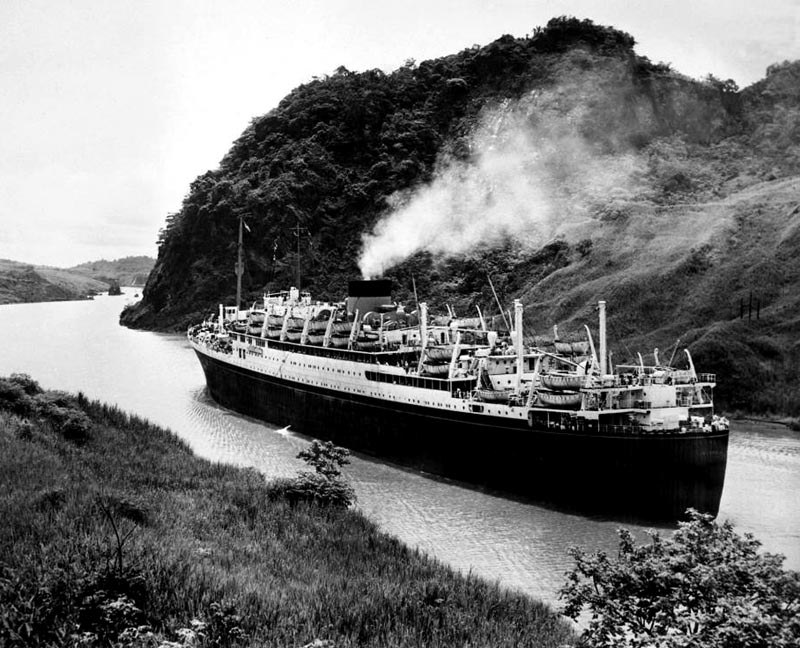
A rare
aerial stern view of the post war M.V. Georgic sailing through the
Thank you
View an 11 minute Movietone film of the M.V. Georgic on YouTube: Enter Here
**************
“Blue Water Liners sailing to the
distant shores.
I watched them come, I watched
them go and I watched them die.”
Featuring over 1,365 Classic Passenger Liners, Passenger-Cargo Liners & Classic Cruise Ships!
Or ENTER HERE
For interest:
Sadly an email service to ssMaritime is no longer available, due to the
author’s old age and chronic illness as well as being disabled, etc. In
the past ssMaritime received well over 120 emails per day, but
**************
ssMaritime.com & ssMaritime.net
Where the ships of the past make history & the 1914 built M.S. Doulos Story.
The Author commenced in Passenger Shipping & the Cruise Industry in 1960.
In addition he was the founder of “Save the Classic Liners Campaign” in 1990.
Please Note: ssmaritime and associated sites
are 100% non-commercial and the author seeks no
funding or favours of any shape or form, never have and never will!
Photographs
on ssmaritime and associate pages are by; the author or from the author’s
private collection. In addition there are some images that have been provided
by Shipping Companies and private photographers or collectors. Credit is given
to all contributors. However, there are some photographs provided to me without
details regarding the photographer/owner concerned.
This notice
covers all pages; although,
and I have done my best to ensure that all photographs are duly credited
and that this notice is displaced on each page, that is, when a page is updated!
ssMaritime is
owned & © Copyright by

